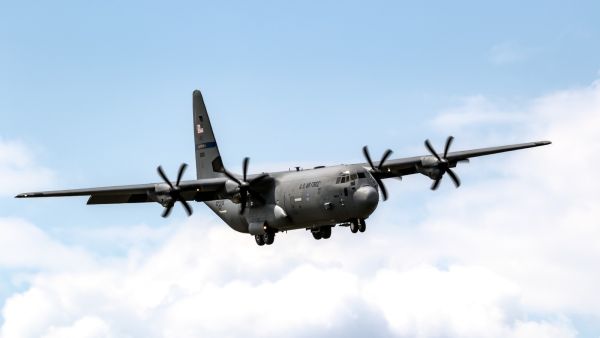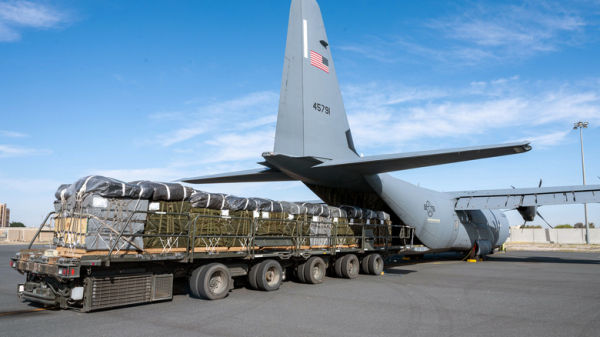Lockheed Martin’s C-130 Hercules has been defying physics since taking its first flight in 1954. The Air Force began flying the C-130 on a regular basis in 1956, and the plane, known affectionally as the Herc (or Herk), has served as its airborne workhorse ever since. With more than 2,500 built in more than 70 configurations, it holds the prestigious record for having the longest continuous military aircraft production run in history. It’s also one of the oldest aircraft of any type still in service today.
Advertisement
The C-130’s design allows for equipment to be swapped out and changed based on the mission, so it’s just as capable of carrying troops and equipment to hot spots as it is attacking ground targets (with cannons), dropping bombs, or snatching satellites in midair. They have been used to resupply Antarctica scientific research bases and as weather reconnaissance “Hurricane Hunters” by the 53rd Weather Reconnaissance Squadron. Meanwhile, the U.S. Forest Service uses them as air tankers to battle forest fires. Versatility and flexibility is integral to the C-130s incredible success. Still, the C-130 has some rather interesting strengths and weaknesses that are worth knowing about.
The YC-130 prototype Herc first took flight in August 1954, and two years later, the Air Force received the first production version (C-130A), which was virtually identical to the prototype. Powered by four Allison T56-A-lA turboprop engines, each pumping out 3,750 horsepower, it had an empty weight of 59,164 pounds but boasted a maximum takeoff weight of 122,245 pounds. It had a cargo compartment volume of 3,708 cubic feet and could carry 35,000 pounds of cargo.
Advertisement
This Hercules can carry the load
The newest iteration of the C-130 is the “J” model (aka the Super Hercules), which was delivered to the Air Force in June 1998. The C-130J “family” boasts 11 different versions that can be used to conduct over 16 different mission requirements and, as a whole, has already logged more three million flight hours.
Advertisement
It’s unique high-wing placement allowed the cargo floor to be situated at truck-bed height above the ground. Combined with the “roll-on/roll-off” rear-loading ramp, the C-130 can carry everything from palletized cargo to utility helicopters and even six-wheeled armored vehicles exceedingly long distances.
For example, the standard C-130J configuration (along with the “E” and “H” variants) has a maximum takeoff weight of 155,000 pounds and a maximum allowable payload of 42,000 pounds, which equates to any combination of six pallets, 72 litters, 16 Container Delivery System (CDS) bundles, 90 combat troops or 64 paratroopers.
The C-130J-30 is what Lockheed calls the “stretch version” of the standard C-130J and adds 15 more feet to the fuselage, which provides enough space for two more pallets. It has a maximum takeoff weight of 164,000 and can carry a maximum of 44,000 pounds. This equals eight pallets or 97 litters, 24 CDS bundles or 128 combat troops or 92 paratroopers (or any combination of those things). While the C-130 can haul massive tonnage, it’s nothing compared to what Lockheed’s C-5M Super Galaxy can haul.
Advertisement









